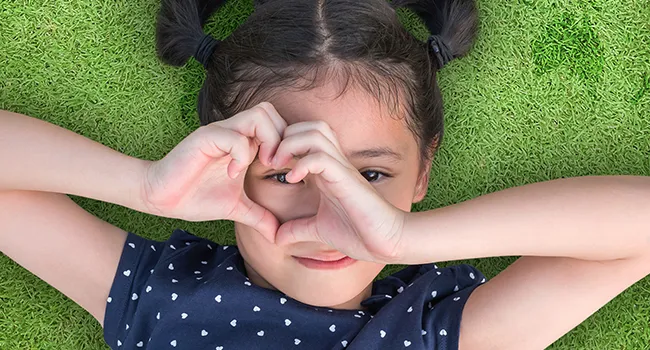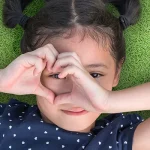Centre for Sight celebrated Children’s Eye Safety Month
Did you know that August is dedicated as Children’s Eye Health and Safety Month by the American Academy of Ophthalmology? This month is focused on raising awareness among the masses to save children’s eyesight and preventing eye injuries and vision loss.
Many vision-related issues can lead to complete vision loss if left untreated. Children’s Eye Health and Safety Month encourages parents to save their ward’s eyesight from numerous vision-threatening disorders by taking them for regular eye screening and comprehensive treatment. Focusing on a child’s eyesight is also vital because many eye ailments can occur without you or your child noticing.
Common eye problems symptoms in children
Be precautious of your child’s eyesight if you have a family history of vision-related problems, like squints. Visit an eye specialist if you notice these signs and symptoms in your child:
- If he/she frequently rubs eyes
- If he/she blinks eyes more than usual for near work
- If the child has a poor attention span for doing near work or takes an excessively long time to do homework
- Faces trouble reading, writing, and skips words or sentences
- Tilts head or thrusts head more often
- Has squints (strabismus)
- Keeps one eye mostly covered or closed
- Light sensitivity
- Poor eye-hand-body coordination while playing outdoor sports
Things parents need to keep in mind if their child has met eye injury
- Do not let your child rub their eyes
- If some chemical gets into his/her eyes, flush with water
- Do not apply any medication to their eyes without a doctor’s prescription
- Do not try to remove any foreign substance/debris from their eyes with your hands
- Rush to a medical professional for emergency treatment and assessing eye injury thoroughly
Common eye problems in children
Listed below are some commonly seen eye-related ailments in children:
- Lazy eye (Amblyopia):
Amblyopia is an eye disorder in which the vision in one eye does not develop the way it should. Often called ‘lazy eye,’ this disorder leads to reduced vision. It begins during infancy and early childhood. In some rare cases, lazy eyes can affect both the eyes.
- Crossed eyes (Strabismus):
Also known as squints, strabismus is an eye condition in which both the eyes are not able to align in the same direction. One eye will turn upward, downward, inwards, or upwards, while the other focuses at a particular spot. This can be corrected with eyeglasses, practising eye exercises, wearing an eye patch, or surgery. Squints are common in children and hence should be dealt with effectively during childhood.
- Ptosis (drooping eyelids):
Ptosis happens in infants and children when their eyelids are lower than it should be. It can happen in one or both the eyelids and can block partial or full normal vision.
- Colour deficiency (colour deficiency):
Colour deficiency affects the perception of colours. People suffering from this condition can see some colours a bit differently than the others. A child suffering from colour deficiency can have issues while identifying colours or distinguishing between colours.
Eye care tips for your child
There are numerous things that parents can do to preserve their child’s eyesight and gain a healthy vision, like:
- Wearing protective eyewear:
Parents should make it a point that their child wears protective eyewear while playing outdoor sports and doing other recreational activities.
- Keep a tab on a child’s digital/ electronic time spent:
These days, technology plays a vital role in everyone’s life. Likewise, children are also spending a lot on time using mobile, tablets, computers, and TV. Parents need to keep a tab on their child’s average time spent and limit it when it’s needed.
- Spent more time outdoors:
For a healthy body and eyes, it is paramount to spend some time outdoors on a daily basis. It relaxes the eyes. Outdoor activities like swimming and cycling also improve hand-eye coordination.
- Eat healthy:
Make sure your child eats a healthy, balanced diet. Vegetables and fruits are good for a healthy sight. Eating fishes like salmon and tuna are beneficial for the development of the eyes.
- Regular eye checkups:
Parents should take their child to an eye specialist for vision screening during infancy, their pre-school and school-going years.
- Encourage healthy eye care habits:
Parents should always encourage healthy eye care habits in their children, like maintaining at least 30 cm distance while reading a book, taking at least 8 hours of sleep, drinking enough water, etc.
Centre for Sight is a leading eye care centre in India, and it is known for its unmatched eye care services in India. Visit your nearest CFS centre for your child’s quality eye care. CFS also houses CFS Vision for all your requirements for high quality spectacles and safety glasses. Consult CFS for quick diagnosis and reliable treatment.
Article: Centre for Sight celebrated Children’s Eye Safety Month
Author: CFS Editorial Team | Aug 9, 2020 | UPDATED 02:25 IST
*The views expressed here are solely those of the author in his private capacity and do not in any way represent the views of Centre for Sight.





